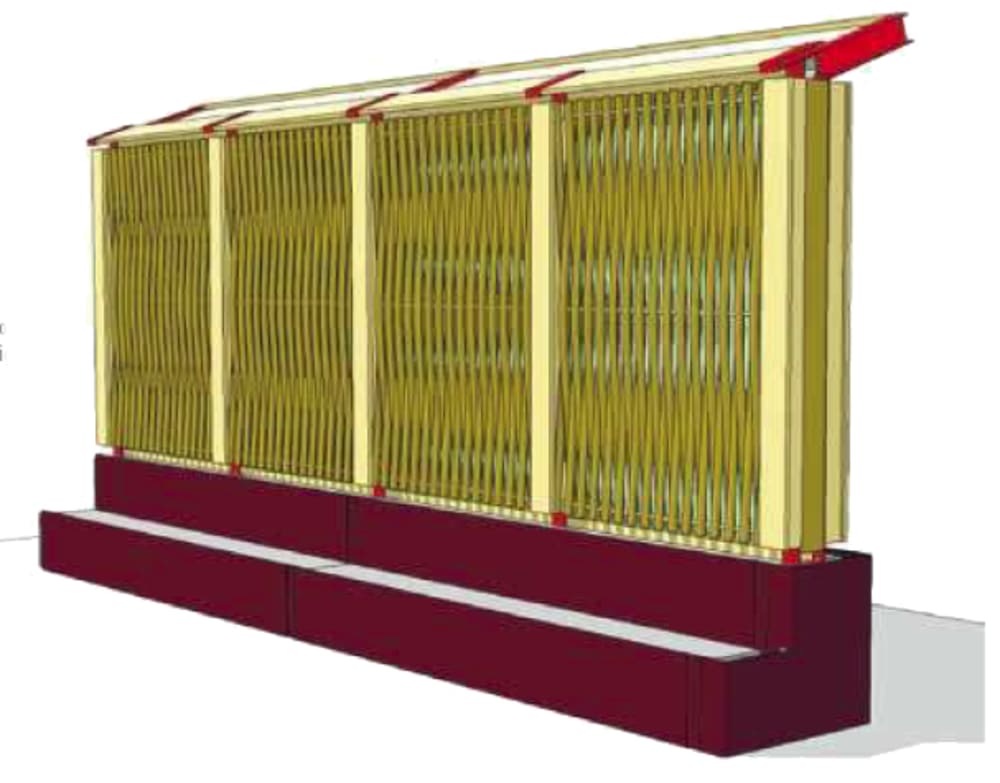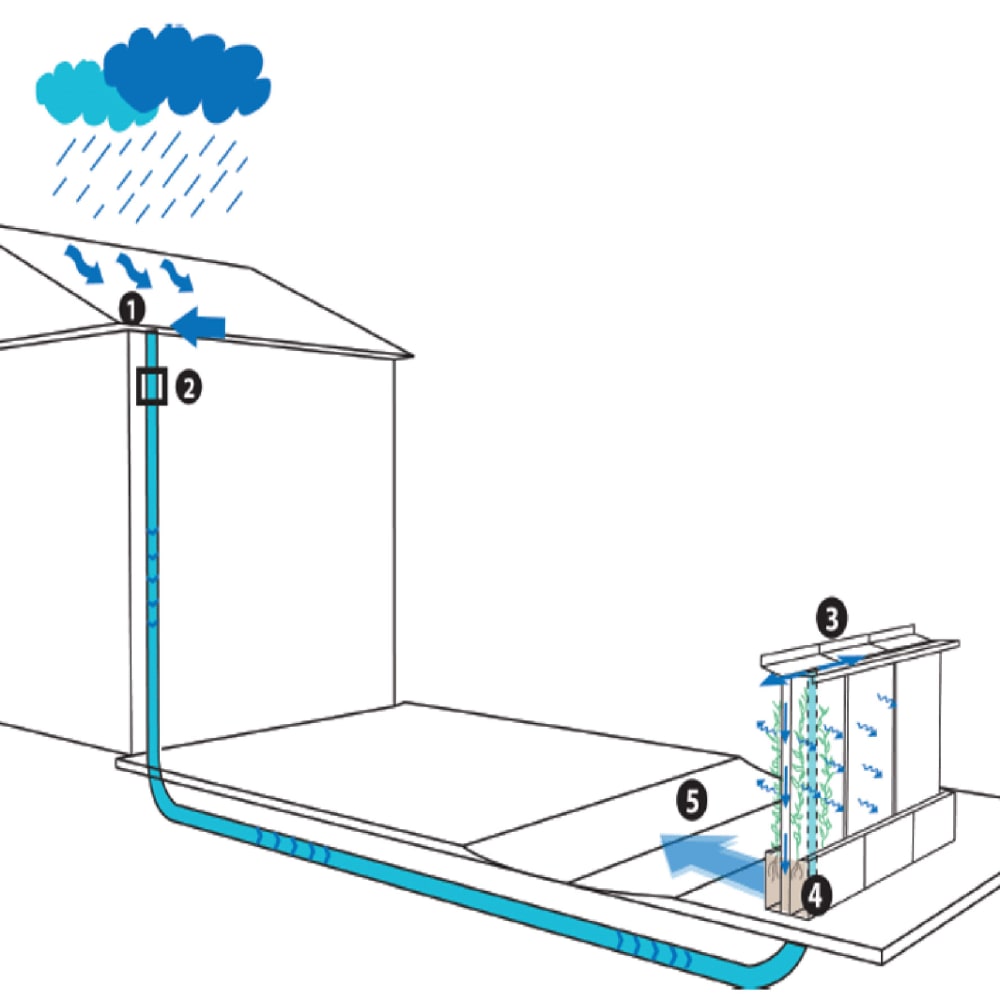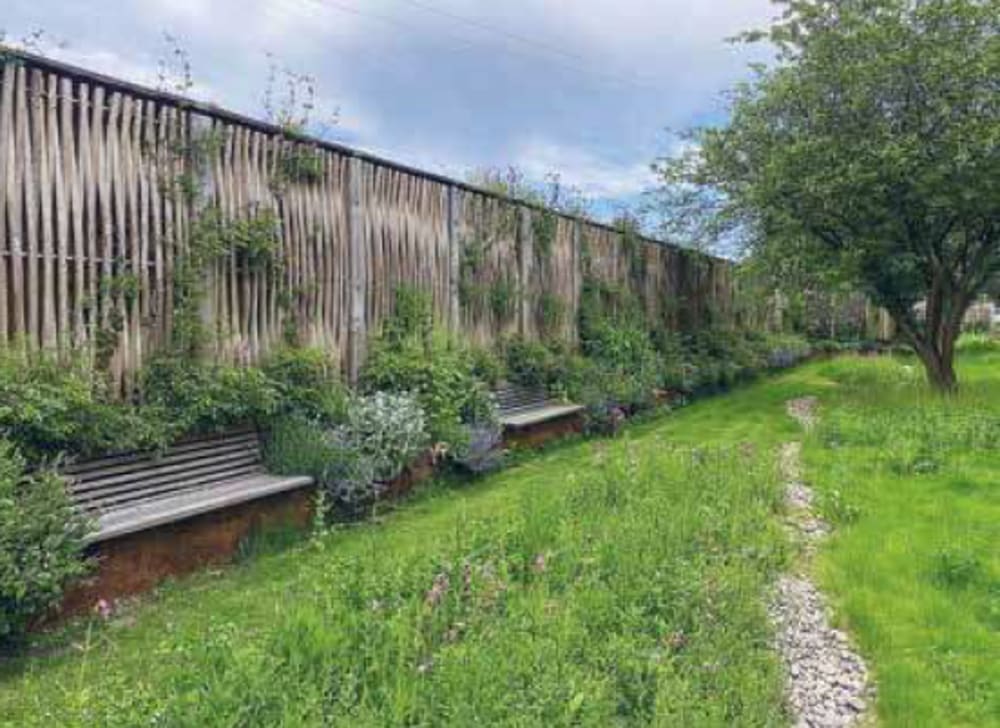

An urban noise and building envelope with built-in roof drainage system and with a low carbon footprint.
Green Screen solves both the problem of traffic noise and flooding in the event of cloudbursts. The core of the Green Screen consists of noise-absorbing mineral wool, which also serves as a vertical surface for evaporating rain coming from the roofs of the adjacent buildings. At the same time, the Green Screen has created a small and quiet green living space close to one of Denmark's busiest roads.
The combined noise and climate screen is developed in natural materials such as willow, larch and robinie, which create attractive urban spaces and typically do not attract graffiti and vandalism.
To arrive at the final design, the various design steps were drawn in 3D in the program Vectorworks® and subsequently calculated using COMSOL Multiphysics® software to ensure that the various steps in the design process were also buildable purely static, see Figure 1.
To ensure the stability of the screen, simulations of the various design steps in the design/build process have been carried out on an ongoing basis.
Green Screen is sized to handle a 10-year rain event and thus has a capacity equivalent to the public sewer. In the event of extreme rainfall exceeding the capacity of the Green Screen, the excess water is directed to a green garden area, which, with the help of an encircling rampart, can withstand up to 100 years of rain events.
Green Screen is constructed of willow weaving and lined with mineral wool, which can soak up rainwater for later evaporation.
After gravity has pushed rainwater to the top of the screen, it runs along an open perforated gutter, so that the entire screen receives part of the water. From the gutter, water seeps into the mineral wool inside the screen. In Green Screen, therefore, the mineral wool acts as a sponge, receiving water from the roof and then gradually releasing it into the air. If the mineral wool becoming fully water-saturated with prolonged or heavy rains, the excess drips out into the bottom of the mineral wool, where it is collected in a planting pit. Here it benefits the plants, see Figure 2.
Green Screen appears as a wooden screen and not a metal screen or a heavy wall. To emphasize the furniture function, the screen is equipped with some benches, see Figure 3.
The willow trunks are straight, powerful, and not cut up into slats, and this is essential to achieve the desired service life, which is estimated to be at least 30 years. Steel is still included, but to a discreet extent as the load-bearing structural parts. Facades made of willow wood have meant that the screens today have a 60-67% lower CO2 footprint compared to a conventional noise barrier made of steel cassettes.
-
Awards
-
 2022 Consumer Product Design Category Winner
2022 Consumer Product Design Category Winner -
 2022 Top 100 Entries
2022 Top 100 Entries
Like this entry?
-
About the Entrant
- Name:Tim Larsen
- Type of entry:individual
- Software used for this entry:Vectorworks and Comsol
- Patent status:none








